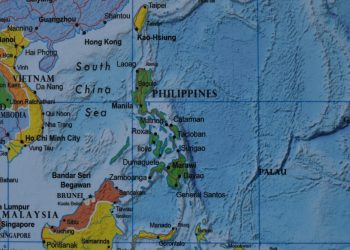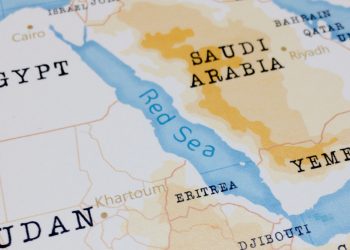Ro-Ro ports project costs several billion pesos
 Despite the fact that Ro-Ro ports are needed by a maritime country such as the Philippines, Filipino contractors are opposing a contract between the Philippine government and a French corporation to put up modular steel adjustable Ro-Ro ports on 72 islands in the archipelago.
Despite the fact that Ro-Ro ports are needed by a maritime country such as the Philippines, Filipino contractors are opposing a contract between the Philippine government and a French corporation to put up modular steel adjustable Ro-Ro ports on 72 islands in the archipelago.
Why? Because the contractors want to build the ports themselves out of concrete. The whole project will cost several billion pesos so you can understand why the contractors want our government to cancel a contract and re-award the contract to them.
Ro-Ro ports are needed by the Ro-Ro (roll-on, roll off) vessels that make the loading and unloading of cargo so much easier and faster. In the traditional sea vessels, gangs of stevedores spend many hours and days trudging up and down gangplanks to carry off or into the holds of the vessels sacks of produce. With a Ro-Ro, the front of the vessel is simply lowered and trucks loaded with cargo drive into and out of the vessels hold. It takes only minutes to do this.
Thus, the vessels and the businessmen save precious timeand money. The Ro-Ro was adapted for peacetime use from the World War II landing craft that delivered tanks, bulldozers, trucks, jeeps and troops from the invasion ships out at sea to the landing beaches.
Because of the different levels of the sea at different times of the day, depending on the tides dictated by the phases of the moon, the Ro-Ro needs ports with adjustable landing piers so that the trucks can drive off as soon as the Ro-Ro arrives. Without such an adjustable pier and if the Ro-Ro arrives when the tide is either too high or too low, it will have to wait until the tide reaches the right level, thus wasting precious time, before it can disgorge its cargo trucks or load them.
Luckily, a French corporation has the technology for producing modular steel ports with landing piers that can be raised or lowered to the level of the ship as needed. It is made of steel good for at least 85 years. Moreover, it can be moved from port to port, so it can be transferred where it is needed. Better still, the French bank, BNP Paribas, agreed to extend a loan for the project.
The project was studied and reviewed by the Philippine Ports Authority (PPA), the National Economic Development Authority (Neda), the Department of Transportation and Communications (DoTC) and other government agencies, and was approved.
The Philippines has already paid 15 percent of the contract price and the French corporation has already finished fabricating more than half of the required steel ports, which are now ready for delivery to the Philippines.
In the middle of all that, a committee composed of representatives from the DoTC, PPA and Marina recommended the cancellation of the contract, saying it is overpriced.
The Neda came back with a rejoinder that it was a good project, inexpensively priced and should be continued. Undersecretary Ruben Reinoso, a former Neda assistant director general, was castigated for airing opinion contrary to that of the PPA-DoTC-Marina committee.
Reinoso was chastised for a crude attempt to unilaterally dictate policy. Why? For airing an opinion based on facts?
The committee said that the project was overpriced, and that PPA could get ports built at P40 million to P50 million each. Reinoso said this was not a fair apples to apples comparison. In reality, three examples of PPA port projects are grossly overpriced, ranging from P400 million (Macabalan, Cagayan de Oro) to P86 million plus P397 million (Tacloban Port renovation), to P715 million (Pulupandan wharf). In comparison, French modular Ro-Ro ports cost only P143 million each, payable in 15 years, equivalent to P83 million in todays value.
Reinoso was also chastised for stating that there will be dire consequences if the contract is cancelled. Of course there will be. Cancelling the contract will harm our relations with the French. It will, along with Fraport (the German builder of Naia 3), BaggerwerkenDecloedt en Zoon (the Belgian firm with a contract with the Laguna Lake Development Authority to dredge Laguna Lake) and Metro Pacific (Hong Kong), will give us a reputation in the international community that we are not a trustworthy partner.
This is bad timing. According to UNCTAD Data, Global and Regional FDI trends in 2010 to 2011, 53 percent of FDI inflows are slated for developing and transitioning economies. It is a bad thing because it would dampen the attraction of the second P in PPP, aka the Private component in infrastructure investment.
And if one believes that infrastructure is about the socio-economic development it brings to the people, and not the projectbe it a bridge, highway, or portthen that is a true disservice to the constituency that the Aquino administration serves.
Reinoso was also castigated for stating that the project was already underway when the review was ordered. But the project was approved by Neda-ICC and the loan agreement was declared in effect in November 2009. The 15 percent down payment was made 60 days later.
In all fairness, Reinoso qualified that all statements were made to show that the department was seeking the best options for the Philippine government. We are still studying it, so I said, look at what are the consequences, and what would be in the best interest of the Philippines.
As for the allegation that Philippine-made concrete ports are cheaper than the French Modular steel ports (P50 million for each concrete port as against P83 million for each steel port), note that all Philippine infrastructure projects are never finished at the original cost estimate. They are finished at much higher costs, as the port projects I have mentioned above shows. All Philippine public works project contracts have escalation clauses. The French contract has none.
Source: Philippine Daily Inquirer































































